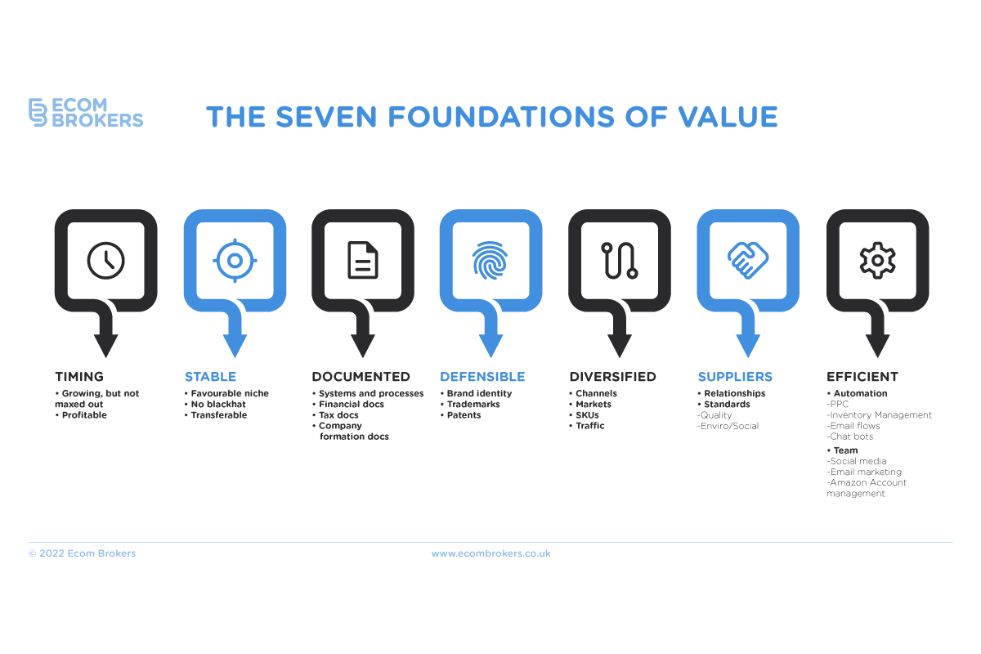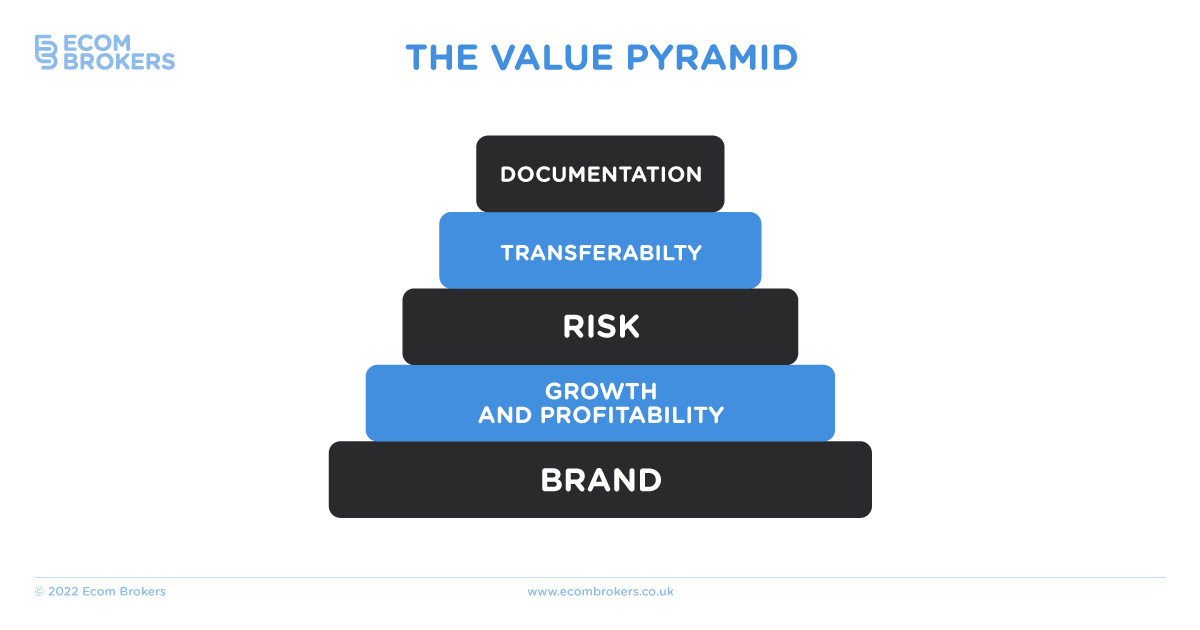
6 Steps to Automated, Scalable, and Sellable Business
Want to create an automated, scalable and sellable business? Read on.
Pretty early on in my entrepreneurial journey, I was a one-man operation. I started Beast Gear in 2016, on my laptop, in a cupboard. In 2018, my business took off. Each month, sales doubled and it was both fascinating and nerve-racking.
Our inventory was a concern to me when I remember. We were out of stock at the time. I hated the 16-hour days when I had to call customer service at 3 in the morning to report an issue. The only way I could do this well was to make some changes.
As a result, I committed to my vision of creating an automated, scalable and sellable business. I worked hard to make this dream a reality. I organised my company and assembled a team to carry it out.
After a few years, I had an unexpected opportunity for a sale.
Fortunately, I was ready.
My efforts paid off with a million-dollar exit. Today, I want to share that system with you.
1. Make a Commitment to Your Vision
The first step is to decide what you want and to commit to it. This is extremely important! You’ll get there even if you don’t know where you’re going. Think long and hard about your company’s objectives.
Do you want a seven-figure exit? A cash flow lifestyle business? What kind of work do you want to do in your company?
Quarterly planning is an effective tool for assisting you with your visions.
Take time each quarter to reflect on your accomplishments and challenges and to determine the following steps to take for your company.
You can message us to help and guide you to rebuild your business and get you positioned perfectly for sale.
2. Standard Operating Procedures/Systems
When I realized the value of good SOPs and systems, my entire business changed. At first, I felt like I was running around all day putting out fires. Everything changed when I realized how to use good SOPs and systems.
My company went from chaos to order.
Fires ceased to occur.
The company was expanding rather than contracting.
This is essential for creating an automated, scalable and sellable business. You cannot progress without it.
To begin, consider the activities you engage in daily. Begin with the most straightforward and repeatable tasks, such as customer service. Make notes about the questions you’re getting and how you’re responding to them in a document.
Don’t make it too complicated!
Your SOPs are a living document that you can continue to revise as time goes on.
After you’ve documented your easy/repeatable task, it’s time to move on to your challenging one that can make an impact.
Implementing a reorder calculator is a standard solution for e-commerce businesses.
The most important thing for e-commerce businesses is to keep their inventory in stock. As a result, putting in place a good process is critical.
3. Establish Your Rockstar Company
Get someone else to execute your systems now that you have them in place!
This is the next step in detaching yourself from the business’s operations and allowing you to become a valid business owner.
Begin by creating an organizational chart for your team.
When your company is small and just getting started, you will be responsible for all roles. When you begin to enlist the help of others, they will most likely play multiple functions as well.
That’s fine.
One person can fill multiple seats, but no more than one person can sit in the same chair.
This is critical in terms of accountability.
As your company expands, you’ll want to hire more specialists in each role who can do the job better than you can.
It wasn’t until I put better people in charge of marketing, operations, and finance that my company did take off and scale.
4. Finances in Focus
When evaluating a business for purchase, any buyer’s first question is to review the financials.
Your financials prove the worth of your company and are used to determine the sale price.
To begin a sales process for your business, you must have complete and correct financials.
Correct means that your bookkeeping and P/L must be classified appropriately and verified. Complete means showing the buyer at least one year’s worth of correct financial data (likely two years or more for larger sales).
So get on top of these as soon as possible so you aren’t left scrambling at the finish line.
Ecom Brokers works with companies that have decided to pursue an exit strategy. Running them through our financial audit is part of the onboarding and assessment process.
Some businesses believe they are on top of their finances (complete and correct). Still, in reality, they are either incomplete or doing it incorrectly.
This is not a problem for Ecom Brokers because our team can certainly assist them in getting their finances in order.
It’s just too bad for the buyer who wants to close their sale as soon as possible but is now delayed and must pay more money to get this necessary piece sorted.
Not only is having complete and historical financials necessary if you want to sell your business but there is also enormous value and insight that can be used to grow your business.
This is one of the most frequently overlooked opportunities for the businesses we work with.
In the following section, we’ll go over how to use your finances to boost your company’s value.
5. Increase Business Value
There are only two ways to increase your company’s value: cut costs or raise revenue.
As a result, any business owner must review their costs and revenue regularly to identify opportunities.
Take time each month, for example, to ruthlessly review your P/L for expenses that can be cut.
Your company’s sale price is calculated as a 30x multiple of its monthly profit.
So every $2000 you save on expenses increases your company’s value by $60,000!
Increased revenue is another way to expand your business.
When you have transparent financials to review, you can see what is working in your business and where you should focus your efforts.
For e-commerce businesses, this can mean determining which SKUs and advertising campaigns are the most profitable so that you can invest more in them to increase revenue.
For service businesses, this can mean determining which services and client types generate the most revenue/least hassle so that you can pursue more of them.
Any monthly profit you can add to your business will increase the sale value by a factor of 30. So every little bit adds up and leads to a company that you can later sell for a profit.
Set aside some time to go over your numbers, and brainstorm new ways to grow your business. This will enable you to more effectively identify ways to reduce costs, increase revenue, and build a more valuable company.
6. Exit (?)
Now you’ve built a profitable business in line with your vision, created systems for the company to grow, assembled a fantastic team to run it, are on top of your finances, and are maximizing the value of your business. Congratulations on such an incredible achievement!!
You have options at this point.
You have completed the two requirements for selling your business: complete financials and a company that does not rely on you to run it.
Is it, however, the best thing for you to do to sell your business?
For some, it most certainly is—however, not everyone.
Building a business is difficult!!
If you want to exit your business, you have more options than you may think.
The first option is a direct sale. Suppose you don’t see a bright future for your company. In that case, this is a viable option (dying industry, margins going down, etc.) alternatively, if you are excited about a new project and want the business off your plate. Or if you need the money for something else.
The other option is to hold your company. You have a fantastic team that is doing most of the heavy lifting. Can you structure your organization so that you can do more of what you enjoy and less of what you don’t?
If you hold your company, you can also hire a CEO to take your place. This would allow you to retain ownership of your asset while elevating yourself to the business owner or advisor position rather than being actively involved.
The two most frequently discussed options are to sell or to hold. However, there is another option that, in my opinion, is very exciting. That is, sell a portion of your company.
If you need money but know you have a good business, selling a portion of it can be a good option. This allows you to take some chips off the table, get your money, and still own a significant amount of your company for the future.
Furthermore, if you sell a portion of your company, you can bring on investors/partners with complementary skills and experience. As a result, they can add more value to the business in ways that you may not be aware of.
As a result, there is a genuine 1 + 1 = 3 opportunity.
It’s even possible that you’ll sell a portion of your company and bring in value-added investors to take it to the next level. Within a short period, the business has grown beyond the point where you can take it personally, and your partial ownership is now worth more than your ownership when you include the investors.
Final Thoughts
There are no hard and fast rules for organizing these things or being creative.
If this is an option you’d like to pursue, please send us a message, and we’d be happy to chat.
That’s it! Follow these six steps to creating an automated, scalable and sellable business.
Give yourself choices. And annihilate the new year.
Ready to sell your business for the best possible price? Click below to get started. No obligation, no hard sell. Just solid, professional advice.








